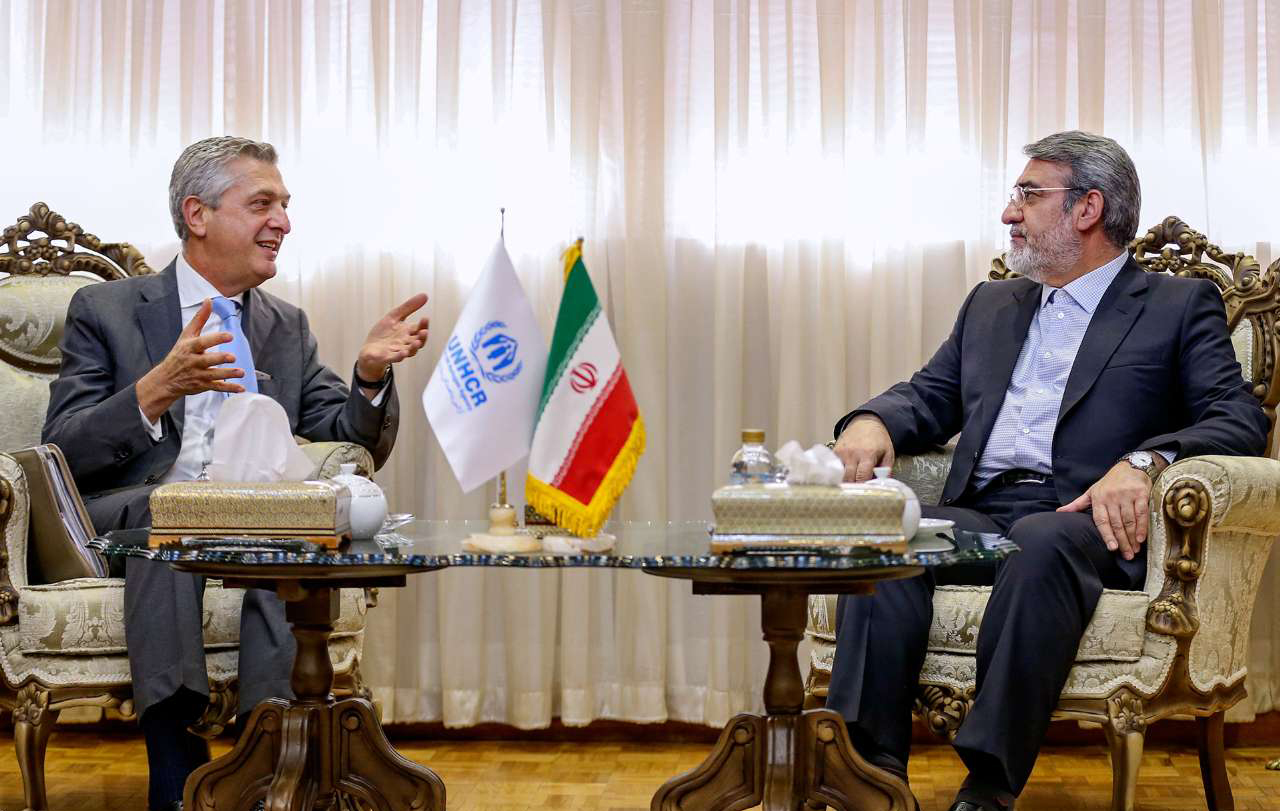The interior minister said Sunday it is high time for Europe and other rich countries to give shelter to the millions of people seeking refuge and also fund the economic, social and political costs that refugees impose on host nations.
Abdolreza Rahmani-Fazli made the call in a meeting with the visiting United Nations High Commissioner for Refugees Filippo Grandi on Sunday, Mehr News Agency reported.
The minister said the negligible international aid does close to nothing in covering the monumental costs the government pays for caring for the refugees living in Iran.
“Iran is home to three million legal and illegal Afghan refugees. Each year, 7,000 illegal Afghans are found and sent back to their country, Rahmani-Fazli said.
“To get a better grasp of the difficulties that come with housing refugees, it would be reasonable that other countries, namely Europe, take these refugees for a few years.”
Rahmani-Fazli called for a joint meeting and serious discussions between UN and EU officials on key issues related to the large and increasing number of people seeking refuge in Iran and other countries.
Grandi said he is very impressed by the measures adopted by the Islamic Republic in the past two years to support people fleeing war, poverty, insecurity, terrorism and oppression.
He said that he had was in Iran some two years ago and has pursued measures recommended by the Iranian government for backing refugees.
He appreciated the plans, services and support that Iran provides refugees, adding that Iran is a true embodiment of responsibility towards migrants and refugees.
The number of Afghan children who are provided with education has risen from 300,000 to half a million, which is in line with the decision by the Leader to ensure that all immigrant children go to school, he added.
In 2015, the Leader of the Islamic revolution Ayatollah Seyyed Ali Khamenei issued a decree stressing that all Afghan children, including the illegals, have a right to register and study in Iranian schools.
Describing the new Iranian policies as very effective, the UNHCR chief concurred that implementing the policies is no easy feat and “international help is essential in this area.”
Grandi said that a draft agreement for Afghan refugees will be presented in November in Geneva and hoped that the international community will help establish a robust agreement so that all the responsibility of providing for the refugees would not be shouldered on a few countries like Iran.
Status in Iran
Iran is one of the world’s four countries with the highest number of refugees. A report on the subject published by the Statistical Center of Iran (SCI) in 2017 shows that the majority of the refugees come from Afghanistan, Iraq, and Pakistan.
Nearly 1.6 million registered Afghans are currently living in Iran among 1.63 million migrants, according to the latest round of National Population and Housing Census conducted from Oct. 2016-Feb. 2017.
The SCI report indicates that the number of Afghan refugees officially registered in Iran is 1.58 million, followed by 34,532 Iraqis, and 14,320 Pakistanis. The 20,844 refugees from other nationalities include 713 from Turkey.
There is no exact and precise data available on the number of all Afghan refugees (legal and illegal) in Iran. According to the Interior Ministry statement in early 2016, almost 2.5 million Afghans resided in Iran of which only one million had proper documents and 450,000 had passports. An estimated one million refugees are living and working in Iran illegally.
The nationality of 105,060 people was “unknown” as reported in the census, but the main populations of concern in Iran continue to be Afghans, the majority of whom arrived before 2001 as prima facie refugees.
Also, based on the numbers published on the SCI website (www.amar.org.ir), a large portion of the Afghans live in urban areas, with 1.24 million in cities, and 340,986 in rural regions.


